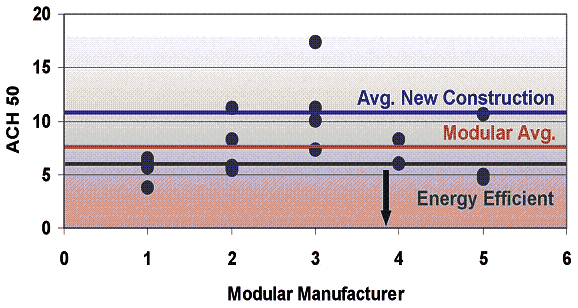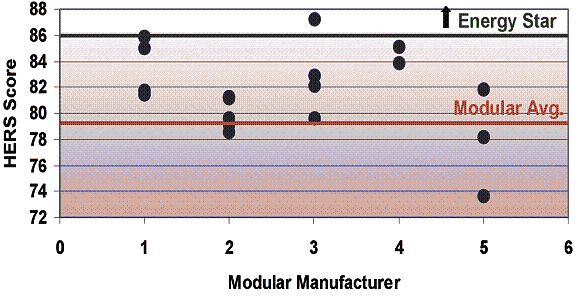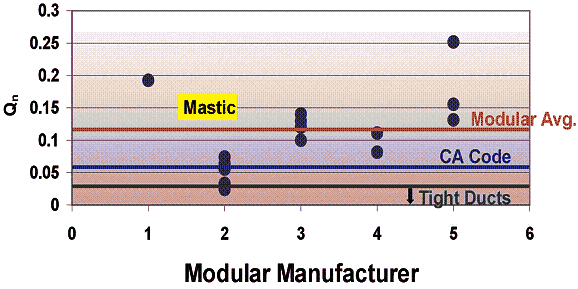| |
|
| |
| Reference
Publication:
Chandra, Subrato, Neil Moyer, Danny Parker, David Beal,
David Chasar, Eric Martin, Janet McIlvaine, Ross McCluney,
Andrew Gordon, Mike Lubliner, Mike McSorley, Ken Fonorow,
Mike Mullens, Mark McGinley, Stephanie Hutchinson, David
Hoak, and Linda Tozer. Building America Industrialized
Housing Partnership, Annual Report - Fourth Budget Period.
04/01/03-03/31/04. |
|
|
| Building
America Industrialized Housing Partnership, Annual
Report - Fourth Budget Period |
|
|
Subrato
Chandra, Neil
Moyer, Danny
Parker, David
Beal, David
Chasar, Eric
Martin, Janet
McIlvaine, Ross
McCluney, Andrew
Gordon, Mike
Lubliner, Mike McSorley, Ken
Fonorow, Mike
Mullens, Mark
McGinley, Stephanie
Hutchinson, David
Hoak, and Linda Tozer |
|
| Florida
Solar Energy Center |
|
| |
|
| 1.3
UCFIE Technical Assistance
Engineering researchers from the UCF Housing Constructability
Lab (HCL) have concentrated on the application of lean principles
to homebuilding. Research areas include: energy design/analysis/testing,
modular factory design, shop floor information systems, and
precast concrete panel production.
- Building America Hickory
Consortium
The Housing Constructability Lab research team performs related
research for the Building America Hickory Consortium. This
research is focused in two areas: (1) developing practical
quality systems that can be used in the modular factory, and
(2) improving the modular builder's construction site finish
process.
- Energy Design, Analysis, and Testing
Energy
Performance Benchmarking Study: Energy performance affects homebuyers, impacting their health,
safety, home durability, comfort, and energy costs. To increase
the visibility of energy performance within the modular industry,
HCL devoted considerable effort in 2002 to developing the
thesis that energy performance is a key quality measure of
modular housing. Initiating an industry-wide energy benchmarking
effort, HCL measured and compared energy performance for selected
modular manufacturers both inside and outside the modular
industry. Findings of this effort were summarized in a report
distributed to each participating manufacturer which documented
the performance of each home tested and outlined a cost-effective
approach to upgrade the home to Energy Star performance levels.
Energy testing began in March 2002 and continued through this
reporting period. Twenty homes produced by five of the largest
modular manufacturers were tested. The manufacturers included:
All American Homes (North Carolina), Avis America Homes (Pennsylvania),
General Homes (Michigan), Nationwide Homes (Georgia), and
Penn Lyon Homes (Pennsylvania). Each home was tested for
envelope and duct air-tightness and inspected to identify
specific opportunities for improvement. Houseplans were redlined
during the visits to reflect "as-built" configurations.
Two of the twenty homes tested achieved Energy Star performance
levels, exceeding the minimum HERS rating of 86. This represents
at least a 30% improvement over a comparable home built to
the Model Energy Code. The average HERS rating for tested
homes was 81.5.
The overall energy performance of the homes tested, stated
as HERS ratings, are summarized in Figure 20. All ratings
were developed using Energy Gauge USA software.
|
Figure 20.
Overall energy efficiency of homes tested.
|

|
Figure 21.
Air-tightness of homes tested.
|
Blower door test results indicating the air-tightness of the
building envelope are summarized in Figure 21. ACH50 is the
number of air changes per hour when the home is depressurized
to -50 Pascals. The average for the homes tested, 7.5 ACH50,
is significantly better than the 11 ACH50 average for new
home construction in the continental US (Sherman and Dickerhoff,
1998). While better than the national average, most homes
tested were still not as tight as homes generally considered
energy efficient (6 ACH50).
Ductblaster test results which indicate duct tightness are
summarized in Figure 22, below. The metric Qn is
a normalized measure of duct leakage from unconditioned space
when the ducts are depressurized to -25 Pascals. The average
leakage for the homes tested, .12 Qn, is greater
than that allowed by the new California energy code, .06 Qn,
and significantly greater than for homes generally considered
energy efficient, .03 Qn. Energy analyses indicated
that most homes tested could reach Energy Star levels simply
by tightening the envelope and ducts and by adding a programmable
thermostat. However, some homes required more extensive improvement
to qualify, like additional duct insulation or more efficient
heating and cooling systems. No comparable data has been found for
other segments of the housing industry.
|
Figure 22.
Duct tightness of homes tested.
|
|
Disclaimer:
This report was prepared as an account of work sponsored by an agency
of the United States government. Neither the United States government
nor any agency thereof, nor any of their employees, makes any
warranty, express or implied, or assumes any legal liability
or responsibility for the accuracy, completeness, or usefulness
of any information, apparatus, product, or process disclosed,
or represents that its use would not infringe privately owned
rights. Reference herein to any specific commercial product,
process, or service by trade name, trademark, manufacturer,
or otherwise does not necessarily constitute or imply its endorsement,
recommendation, or favoring by the United States government
or any agency thereof. The views and opinions of authors expressed
herein do not necessarily state or reflect those of the United
States government or any agency thereof.
|






